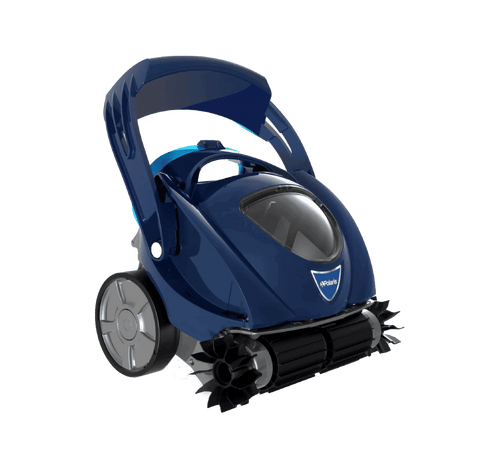Yes, the pool season in Ontario is pretty short. Your pool spends most of the year covered, waiting for that short (but sweet) pool season to arrive. There’s more to taking care of your swimming pool in Canada than just covering it up for the winter. It’s also important to take care of it while it’s covered up and hibernating during the cold weather. This will all be worth it in the long run when you’re ready to open it up again in the springtime.
These are some helpful tips regarding offseason swimming pool care.
Protect the water
When the temperature falls, the rate of microorganism reproduction also drops, but it doesn’t stop completely. A winterizing product with biocidal properties in it will help to fight the growth of microorganism. If the correct pH levels can be kept during the winter then the pool water will be healthier come springtime. Since the water doesn’t circulate during the winter, the free chlorine eventually degrades and is no longer useful. It’s recommended that you use a winterization product that consists of algaecides and is made to work for an extended period of time.
Adding Algaecide
When closing your pool it’s a good idea to add a long-lasting algaestat or algaecide to prevent the growth of the bacteria in it. Adding it to the water a day or two before closing the pool is recommended and then making sure it circulates properly by running the pump for at least 24 hours. You may find that some brands of algaecide may last as long as 90 days, which is a good part of the winter.
Add chlorine
While it’s always a good idea to add chlorine to the water before closing it for the winter, you don’t want to overdo it. If there’s too much chlorine it could possibly beach end up bleaching the pool liner. You may also want to add some liquid chlorine once the water has thawed in the spring to keep it clean. Once you take the cover off remember to vacuum the pool with the filter set to the waste position. This will make sure the dirt and debris doesn’t reenter the pool after passing through the filter. Also, if the water appears to be green after opening the pool, be aware that it takes several hours to clear up. In fact it could take a couple of days and you may need to add another dose of chlorine and algaecide to do the trick. You may also have to vacuum the bottom once more.
Beware of freezing
You don’t want any of your pool equipment and pipes to freeze, so it’s important to drain the water from them. This includes the filter, pump, and heater. If they do happen to freeze, there’s a chance they could crack and this could end up costing some serious money to fix. Remember to drain the pool water about four to six inches below the skimmer as well to make sure water doesn’t enter it and freeze.
Keep the cover clean
Most Canadian owners use some type of pool safety cover during the winter to keep out the dirt and debris and make sure the area is safe for children and animals. Most winter pool covers can be kept clean during the winter by hosing them off when needed. This process will help to keep the water cleaner for those who have a mesh-style safety cover. In addition, make sure the cover fits properly. It’s important that the cover fits your pool properly. This will keep all of the unwanted dirt, debris and melting ice out of the water.
Keep track of the weather
If the autumn weather has brought a lot of rain to your area and you have a mesh safety cover, the chlorine and winterizing chemicals may be quite diluted before the cold weather sets in. If this is the case, you may need to add some more chemicals to the water to keep it clean and keep the algae at bay.
Use enzyme chemicals to treat non-living contamination
A lot of non-organic contamination such as pollen and bird droppings can seep through a mesh safety cover each winter. One of the best ways to battle this is to use an enzyme product to break it down. The product can typically be poured into the pool water through the mesh cover. The enzyme can also get rid of a dirty waterline mark to save you cleaning it in the spring.
Use an air pillow on above ground cover
One of the best ways to keep the safety cover clean on an above ground pool is to connect an air pillow to it in the middle. This will help protect the pool from ice and snow damage and will also push the debris and water to the sides making it easier to clean when spring arrives.
Check an above ground cover regularly
Don’t forget to check the safety cover cable on an above ground pool during the winter to make sure it’s tight. The cover could slip into the pool water if the cable is loose. In addition, check to make sure there’s enough air in your air pillow. If the water level happens to drop during the winter you should add more to make sure the walls, liner and cover aren’t damaged.
Open the pool earlier
You don’t really have to wait until the water’s too warm to open your swimming pool. Not only do you often lose prime swimming time, but the biofilm , fungi, and algae can grow quicker in warmer water. Be sure to treat the water before it starts to warm up.
Have questions about caring for your pool in the off-season and the right chemicals to use? International Pool and Spa Centers has locations across Ontario and our pool experts can show you how to have a crystal clear pool come next season.


